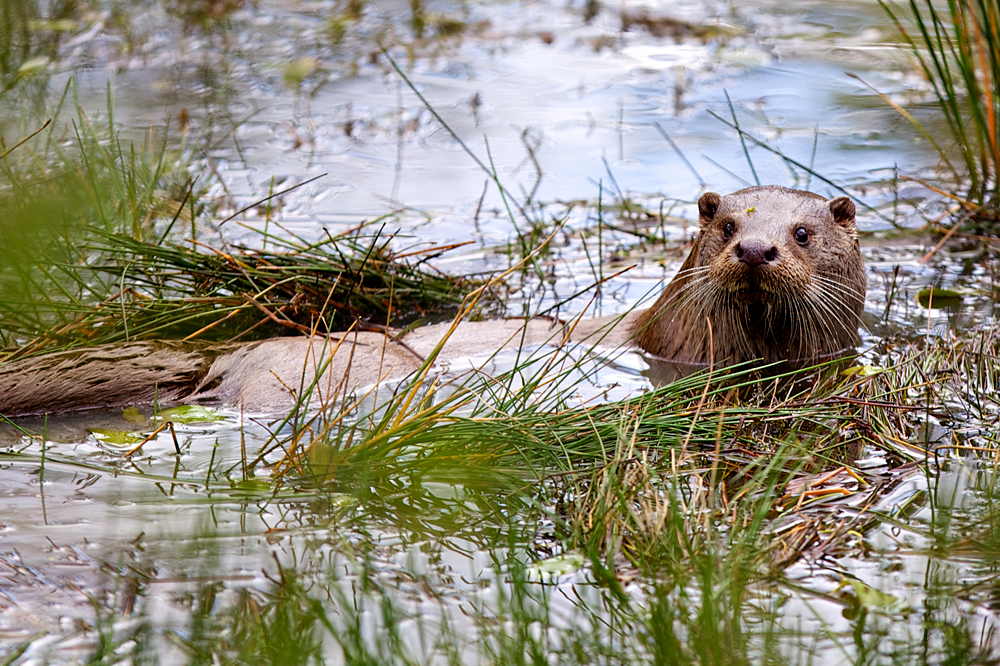Water wonder: Otters are making a welcome comeback in Cheshire rivers, lakes and meres
Sandstone Trail country embraces the wildest parts of central Cheshire, centred on the steep and wooded sandstone ridge.
The varied habitats and less intensively farmed slopes mean there is more room for Britain’s native mammals, from mice and voles and their watchful predators: the weasel, stoat and fox, to brown hares, grey squirrels, badgers, bats, polecats, and otters.
Delamere Forest
Delamere Forest’s dense conifer plantations and broadleaved woodlands hide foxes, badgers and grey squirrels. Watch for the chewed cores of pinecones where squirrels have extracted the seeds.
The steep, flower-rich banks of delightful kilometre-long Sandy Lane, above Willington, shelter mice, voles and rabbits and their predators, stoats, weasels and foxes. Watch for their well-used runs running up and over the hedge banks on either side of the path. The rank scent of dog foxes often punctuates the track, and badgers forage for worms, roots and bulbs along the hedgerows and adjacent field edges.
As the Trail descends from Willington to the lower pastures of the Beeston Gap, watch for rabbits and increasingly rare brown hares browsing in the fields. Recent film proves that otters have returned to the Gowy too.
Beeston Castle
The historic caves within the grounds of Beeston Castle are barred off to protect several species of roosting bat, and there are roosting bats in fissures in the sandstone elsewhere along the Trail.
The steep, wooded Peckforton Hills are home to a range of mammals and birds, including foxes, badgers, grey squirrels, and substantial numbers of polecats which have recently recolonised the area from their strongholds in mid-Wales.
Further south, otters are moving back up the Llangollen Canal into the meres and brooks around Whitchurch. Their footprints and spraints, or fishy dung, have been seen along Bickley Brook, along the Llangollen Canal and around nearby meres.
Booking
Reserve your accommodation, transport and more here, now …

